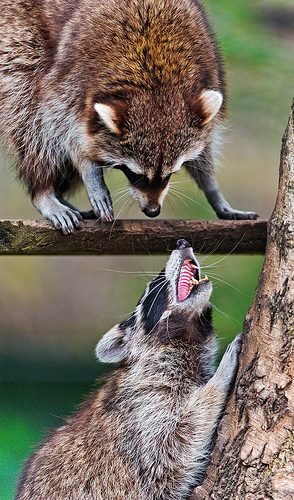 Several months ago at a conference (I honestly cannot remember which one) I overheard a disagreement about the best approach for an arts organization to take in engaging with their community. Was it better to begin with the things that the arts organization does well or with the things that the community most needs done?
Several months ago at a conference (I honestly cannot remember which one) I overheard a disagreement about the best approach for an arts organization to take in engaging with their community. Was it better to begin with the things that the arts organization does well or with the things that the community most needs done?
Despite my guilt at being an eavesdropper, I was nearly overwhelmed by the conversation. First, there were two people who cared so much about community engagement that they had thought about this question. Second, they cared enough to have an opinion. Third, they cared enough to argue! About approaches to community engagement?! I could barely concentrate on the substance of what they were saying.
I have been letting the question percolate for months trying to process the content of that discussion. When it comes right down to it, I think the answer is “Yes.” Or, more accurately, “You need to ask a different question.”
Community engagement almost always requires a partnership between an artist or arts organization and some non-artist community member or organization. (Otherwise, it’s simply the arts doing “for” the community.) The core principle here is that artists and arts organizations are the experts in art. The community is expert in its needs and in what works in the community. The “What do we do?” question can only come from the intersection of those two areas of expertise. So, as I said in Shifting the Center, you start in the middle, with what the arts organization does well and what the community’s interests/needs are. The most appropriate question would appear to me to be, “How can we take what we do well and apply it usefully in the community?” That’s more complicated (and less elegant) than the questions I overheard at that conference, but it seems to be more relevant to the work of engagement. The arts can and should begin with what they have the technical capacity to accomplish, but the work should address the community’s greatest needs.
All of this puts me in mind of the theologian Frederick Buechner’s observation about an individual’s “calling” in life. He said it is found at “the place where your deep gladness and the world’s deep hunger meet.” (Wishful Thinking: A Theological ABC) In other words, at what are you best/what do you most enjoy doing and what does the world (the community) most need? This has always resonated for me as an individual. It seems to make sense institutionally as well.
Engage!
Doug
Photo: ![]()
![]() Some rights reserved by Tambako the Jaguar
Some rights reserved by Tambako the Jaguar

Hi Doug
One thought in relation to the argument you heard, and your reframed question-
““How can we take what we do well and apply it usefully in the community?”
I think the trick is, you may have reframed the agency and therefore the knowledge back into the artist’s corner as a starting place…(and by corner, I don’t mean to imply a match of antagonists- i simply mean two different starting places).
You are right about an intersection, a place where artists and non-arts partner meet.
But much arts-based engagement presumes that with expertise in the arts comes an awareness of community needs, and skips the necessary phase of listening that must accompany true partner-building.
If the goal is more than a deepening of the programming the arts organization currently produces, the middle is a good place to start only if everyone approaching the middle brings true curiosity and generosity in the journey from that middle towards collaborative action.
thanks for your thoughts, as always.
Absolutely. Your observation “much arts-based engagement presumes that with expertise in the arts comes an awareness of community needs, and skips the necessary phase of listening that must accompany true partner-building” is precisely on point. I often say that artists and arts organizations are experts in what art can do and how it can do it; communities are expert at community interests/needs and what works in communities. For effective community engagement, the two need to come together and listen to each other.
Doug, your observations ring true to my experience. I find that most arts organizations have really bad hearing when it comes to early partnership conversations with communities. They hear through the lens of what is convenient and preferred from their side, and they edit what they hear and often miss the big message. When I have been in partnership conversations that get past that, where the arts organization really HEARS what community partners care about, it can be daunting and discouraging at first–there may not seem like much overlapping common ground. But with patience, if both sides keep being truthful and open, THEN the true future possibilities sprout. Then the projects that are truly answering community needs and interests AND feel artistically authentic and interest get discovered. The future is born in that in-between, liminal, space, of really hearing and offering your best.
Eric: Beautifully expressed. Many thanks.